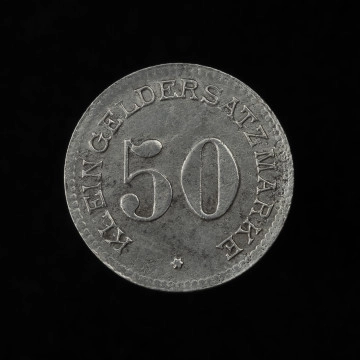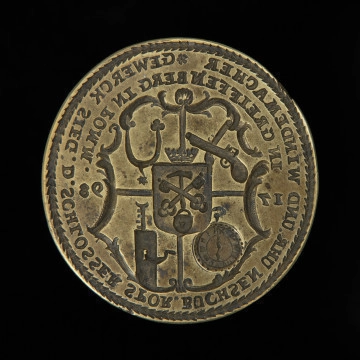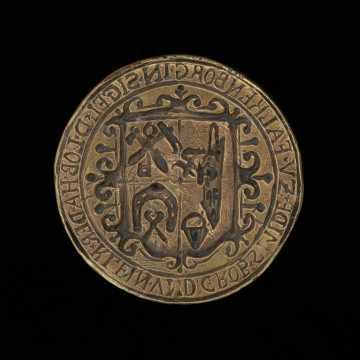
50 pfennig
1901 — 1925
National Museum in Szczecin
Part of the collection: German coins
Introduced into circulation at the beginning of the 16th century, silver thalers, apart from being used as means of payment, were also used by the ruler to communicate with the society. Thanks to their designs, they could be used to convey specific messages to their users. The obverses of thalers minted by rulers usually bore their dignified depictions, names and key titles, while the reverses were decorated with coats of arms. In many cases, the coat of arms of the ruler was depicted on the obverse of the coin, and the reverse was used for symbolic or occasional content. The thaler of the ruler of the duchy of Brunswick-Wolfenbüttel, Henry Julius (1564-1613) was designed in exactly this way. The duke was a well-educated ruler of many talents. He expanded the University of Helmstedt, where he himself received his education in legal matters. He funded public buildings, surrounded himself with artists, scientists and writers, and funded a theatre. He believed that by these actions were promoting the development of his state. This was reflected on the presented coin with a Latin inscription on the reverse – With Honesty for the Fatherland. A similar message can be found on many other thalers – I Burn for my Homeland. The reverse of the presented coin also depicts the so-called wild man holding an uprooted tree in his hand, which is supposed to depict vitality and strength. Here, it is used to portray a ruler who does everything for the good of his country, and who can root out evil if the need arises. However, he was disliked by his subjects, who had to finance his lavish lifestyle and extravagant spending. Eventually he was forced to go to the court of Emperor Rudolph II (1552-1612), where he solicited help to fight the rebels. There,he brought his treasury to its ultimate ruin with his lavish lifestyle; however, this did not stop him from minting coins celebrating his sacrifice for his state.
Mieszko Pawłowski
Other names
Taler
Author / creator
Object type
coin, money
Technique
minting
Material
silver
Creation time / dating
Creation / finding place
Owner
National Museum in Szczecin
Identification number
Location / status

1901 — 1925
National Museum in Szczecin

1798
National Museum in Szczecin

koniec XVII wieku
National Museum in Szczecin
DISCOVER this TOPIC
National Museum in Szczecin
DISCOVER this PATH
Educational path